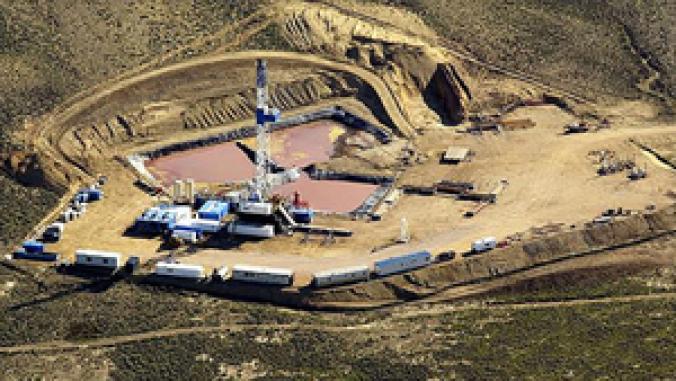What the U.S. Must Do to Attract Clean Energy Investors
<p>When investors study U.S. climate policies today, they see a constantly shifting patchwork quilt of state, regional and federal policies. What investors need are comprehensive long-term national policies, including a national cap-and-trade system that limits and puts a price on carbon emissions. <br /> </p>

Wind turbines - http://www.flickr.com/photos/caveman_92223/ / CC BY-ND 2.0
When asked once why he was so good, legendary hockey player Wayne Gretzky replied, “I skate to where the puck is going to be, not where it has been.”
As U.S. policymakers arrive in Copenhagen this week to discuss a global climate change pact, they should be mindful of this. The puck is moving to a low-carbon global economy, but many U.S. policymakers don't realize it. Instead, they seem content with the status quo, which is triggering double-digit jobless rates and thousands of clean energy jobs going to Europe and China instead of Ohio and Pennsylvania.
It is ironic that President Obama's recent "White House to Main Street" job tour in Allentown, Penn., came just as the Gamesa wind turbine plant in Pennsylvania was laying off nearly half of its 280 workers. Germany also reported that its jobless rate had fallen to 7.6 percent, with much of the job momentum coming from the country's burgeoning clean energy sector that now provides eight times more jobs per capita than the U.S.
The question U.S. policymakers should ask is, "Why is Germany adding these jobs as the U.S. is losing them?"
Following the money is a big part of the answer.
Institutional investors have trillions of dollars at their disposal and they're looking under every rock to find clean energy opportunities around the world. Right now, much of their capital for clean energy is flowing to China, Germany and other European countries where supportive policies are providing more certainty and enabling competitive returns. Investors are far less comfortable sinking their money into the U.S. - the result of which is a recent spate of plant closings and layoffs in Pennsylvania, Delaware and Massachusetts.
"Manufacturers, developers, utilities, financiers -- they don't see the legislative pieces that they're all hoping for to help the industry move forward (in the U.S.)," Michael Peck, director of external affairs for Gamesa USA, told the New York Times last week.
A recent "Global Climate Change Policy Tracker" report by Deutsche Asset Management makes clear how U.S. and other countries need to change their policies if they want to become safe harbors for clean energy investing. The core principles of these policies are TLC - transparency, longevity and certainty - attributes all missing in the U.S. today.
When investors study U.S. climate policies today, they see a constantly shifting patchwork quilt of state, regional and federal policies. What investors need are comprehensive long-term national policies, including a national cap-and-trade system that limits and puts a price on carbon emissions.
When investors study U.S. climate policies today, they see renewable energy incentives and tax credits offered in fits and starts, usually at the whim of state legislatures and Congress. What investors need are clear long-term national incentives that give investors assurance that they can build and sell green power at a safe rate of return.
When investors study U.S. climate policies today, they see market barriers that make it difficult and time consuming for clean energy providers to sell their power to utilities. What investors need are clear market-entry rules that cover renewable energy providers from the source all the way to the grid.
Governments all agree that solving our global climate challenge will require vast amounts of capital, the vast majority of it being private. But unleashing the investments on the large scale needed will never happen until countries like the U.S. put the right national policies into place. That is where the puck needs to go. Let's hope U.S. policymakers can be skating there in Copenhagen.
Mindy S. Lubber is president of Ceres, a leading coalition of investors, environmentalists and other public interest groups. She also directs the Investor Network on Climate Risk, a network of 80 institutional investors with $8 trillion of collective assets focused on the business impacts of climate change.
This piece originally appeared at Politico.com.
Click here for full coverage of COP15 from the GreenBiz.com and ClimateBiz.com teams, including posts from Copenhagen by Executive Editor Joel Makower and Senior Contributor Marc Gunther, and from dozens of guest contributors from the business world.
Wind turbines - http://www.flickr.com/photos/caveman_92223/ / CC BY-ND 2.0 and http://www.flickr.com/photos/warrenski/ / CC BY-SA 2.0





